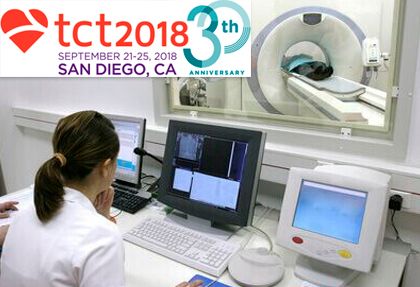The SYNTAX trial had a 5-year follow-up, but the SYNTAXES (“ES” for extended survival) was specifically designed to find out comparative mortality of both treatments (PCI or surgery) at 10 years in patients with three vessel and/or left main lesions.
 This study retrospectively compared survival data at long term of 897 patients randomized to surgery and 907 patients randomized to PCI from the original SYNTAX.
This study retrospectively compared survival data at long term of 897 patients randomized to surgery and 907 patients randomized to PCI from the original SYNTAX.
Mortality at 5 years had been 13.9% for PCI vs 11.9% for surgery (CABG) (p=0.1); the difference in favor of surgery was in the combined events rate (37.3% vs 26.9%; p<0.001).
Data at 10 years on mortality rendered parallel curves, following the prior 5-year trend (29.4% vs 25.6%; p<0.1). That is when looking at the general population, but when assessing only patients admitted for three vessel disease, we observed a trend in favor of surgery (29,2% vs 21,9%, p=0,07). This trend could not be documented in other subgroups of patients such as diabetics or patients with left main disease.
Read also: TCT 2018 | PREPARE-CALC: Rotational Atherectomy vs. Cutting Balloon in Calcified Lesions.
These outcomes can be considered exploratory since only 72% of the general populations could be followed up to 10 years.
Original title: 10- Year Survival after Bypass Surgery versus Drug-Eluting Stents: Preliminary Results of the Randomized SYNTAX Extended Survival study – “SYNTAXES”.
Presenter: Daniel J.F.M. Thuijs.
Get the latest scientific articles on interventional cardiologySubscribe to our weekly newsletter
We are interested in your opinion. Please, leave your comments, thoughts, questions, etc., below. They will be most welcome.





